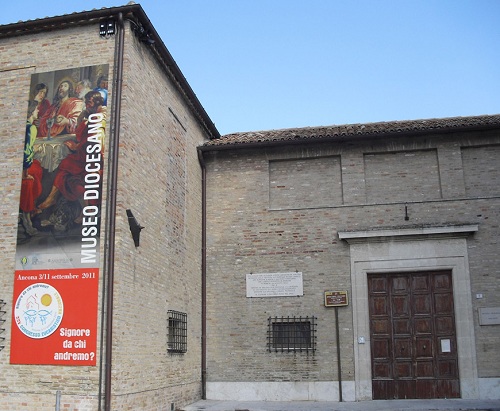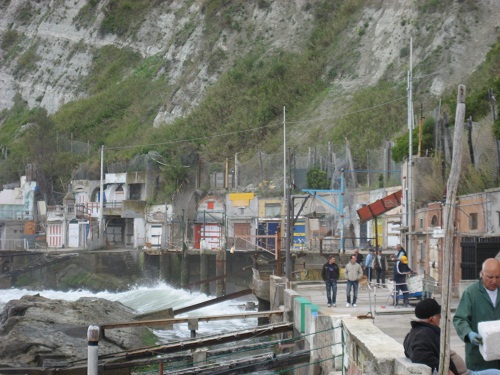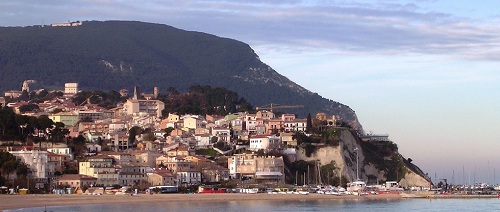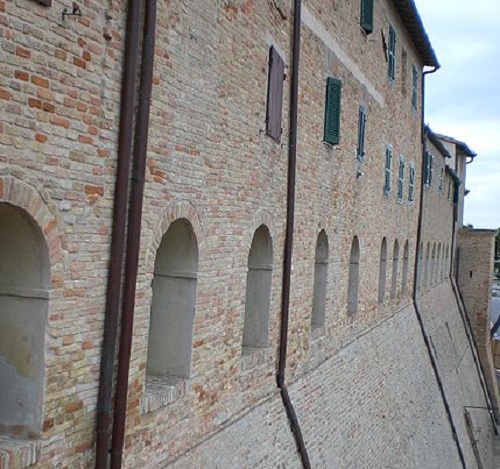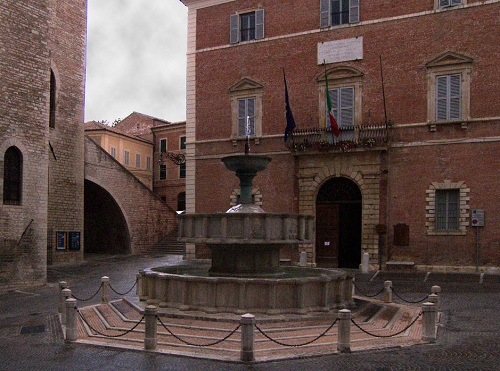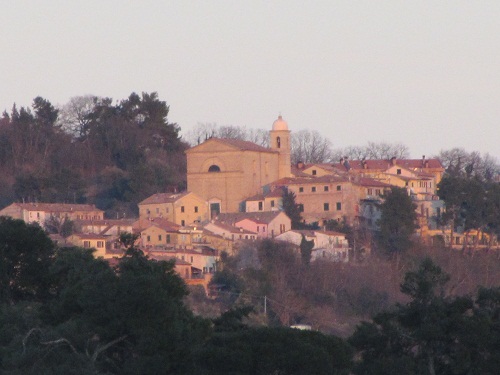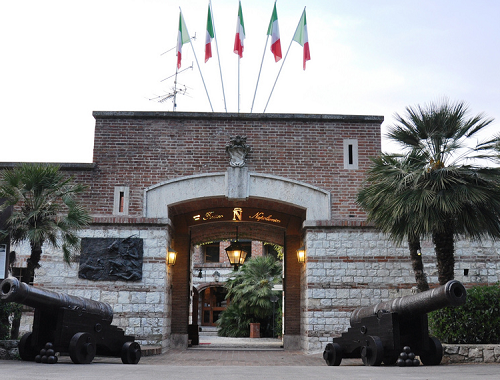Ancona Diocesan Museum
Ancona Diocesan Museum is located inside of the Palazzo del Vecchio Episcopio (Old Episcope Palace) standing on the top of the Guasco Hill in the prestigious position adjacent to the Roman Cathedral of St. Ciriaco – Ancona Dome whose name is the one of its Patron Saint, symbolizing and testifying the magnificence of the town itself. From up there the impressive view over the port and the city centre make this place one of the most exclusive and fascinating of Ancona, where the sunsets fill the hearts of everyone admiring their colours.
Ancona Diocesan Museum was built up around 1834, and its centre was placed in the Cripta delle Lacrime (the Tears Crypt) beneath the Crucifix Altar of St Ciriaco Cathedral with the name of Christian Antiques Museum, required by the Archbishop Card. It was made of material deriving from the Cathedral restoration, and by further finds of other churches of Ancona. In 1952 the dome was restored, and at that time the evidences were transferred to some rooms of the Old Episcope that, nonetheless, was seriously damaged by the earthquake that hit Ancona in 1972.
After a period of restorations and reconstructions over twenty years long, at last in 1993, the Diocesan Museum – thanks to the strong interest of its director Monsignor Cesare Recanatini, was definitively opened taking its centre in the Old Episcope Palace. In 2004 the Museum suffered a further temporary closing due to the sinking of the cliff beneath the building. After the latter necessary works at St Ciriaco Dome on May 2008, the Ancona Diocesan Museum has been given to its numerous public back by a solemn inauguration ceremony.
We want to remind you also that in 1464 the building gave hospitality to Pope Pio II, who was arranging in that period a crusade against the Turks with start from Ancona port;, then, until the end of ‘700, it was seat of the Episcopal house, so as to give hospitality between 1727 and 1730 Cardinal Prospero Lambertini, Bishop of Ancona and next Pope Benedetto XIV. It was seat of the Civil Magistrates until XI century.
The Museum has got two floors, and the works of art, specifically those ones of liturgical style, express completely all those stratified and reciprocally complementary meanings such as the artistic, historical, theological and devotional values. This is the main purpose museum collection is intending to: preserving and keeping the artworks in order to end down in their completeness all the values connoting the work of art.
The works of art are set in 18 rooms that will allow you while visiting the Museum to think back to the main events of the art and history of local territory.
Over 460 works of art can make you live the emotions produced by the sculptural sets, the stone fragments, the parchments, the precious fabrics and tapestries, a numismatic collection, the jewellery, the terracotta, the paintings on wood and the canvas.
As example of exceptional artistic quality you will find out the sarcophagus of Gorgonio belonging to IV century, the Evangeliary of Saint Marcellino of the VI century, the silk cloth of Saint Ciriaco of the X century, the stone pluteus of the XII century, the Cathedral Treasure, the pantings on wood of the Marche School belonging to the XV century and the four Flemish tapestries woven on cartoons draw by P.P. Rubens on the beginning of ‘600.
The Diocesan Museum, besides of the traditional guided visit tours, offers activities of remarkable importance being performed in its external side or in the Tapestry Room or in the Cloister, such as: art exhibitions, thematic routes, didactic labs, presentations of new publishing, conferences, music concerts, events; activities aimed to the care of the collections, such as: restorations, cataloguing, exhibitions mounting plans, acquisitions, borrowings; research activities, such as: studies on collections and materials, consultancy service, participation to scientific conferences and training seminars.
The Museum resources are completed with the rich Library specialized in Art, Sacred Art and Local History.
We are reporting you a list of the numerous initiatives that took place over the years, going back in time:
2010 – Training Update Course for catholic religion teachers
2009 – Art Exhibition “The Lace of the Diocesan Museum. For the first time displayed in the Cloister” – look at the programme and at the leaflet realized for the event
2008 – Reopening of the Ancona Diocesan Museum
2004 – Participation in the art exhibition “Art and furniture in Pio II’s times” (Ancona, Diocesan Museum; Urbino, the House of Raffaello)
2004 – Meeting on “Pio II and Ancona” in the field of the international meetings of studies “Enea Silvio Piccolomini. Art, History and Culture in Europe at the times of Pio II.”
2002 – Presentation of the first number of the “Quaderni della Cattedrale” (“Cathedral Paperbooks”)
2000 – Exhibition of the altar-piece with the Martyrdom of Saint Anastasia of the Ancona painter Nicola Bertucci (1710-1777)
2000 – Training Update Course for teachers “History of a town through its monuments”
1999 – Participation in the II National Meeting “Ecclesiastic Italian Museums from their plan to their management” Congress Hall Hotel “La Fonte” Ancona, organized by A.M.E.I. under the Marche Region aegis
1999 – Participation in the art exhibition: “Books of Stone. A millennium of the Ancona Cathedral between East and West” (Ancona, Vanvitelli Stately Building)
1999 – Organization of the following contests for schools: literary, graphic-pictorial and photographical for the Millenium Celebrations of St Ciriaco Cathedral
1999 – collaboration to the art exhibition “Ancona and its Cathedral: graphic representations over the time” mounted in the Saint Maria della Piazza Church
1998-1999 – Exhibition of the five processional Standards of the Ancona painter Nicola Bertucci (1710-1777)
1998 – “Nights of Art”
1997 – Training Update Course for teachers “Planning of didactics with comparison”
1996 – Training Update Course for teachers “Let’s communicate with method: reading of artistic products”
1993 – Inauguration of the new mounting of the Museum
1989 – Participation in the art exhibition “Rubensiani Tapestries and precious fabrics of the Ancona and Osimo Diocesan Museums” (Ancona, Saint Maria della Piazza) Temporary mounting of a tapestry restoration laboratory, inside Old Bishop Palace and in the cloister
Diocesan Museum
9 Church Square
60121 Ancona
e-mail: museo.ancona@diocesi.ancona.it
web site: www.museodiocesanoancona.it
Ancona Diocesan Museum Opening Time:
From October to April:
Saturdays, Sundays and Public Holidays
9.00 – 12.00 / 15.00 – 18.00
From May to September:
Saturdays, Sundays and Public Holidays
9.00 – 12.00 / 16.00 – 19.00
Admission Free with guided visit tours
They provide for a guided visit tours service out of the Museum opening time for:
– Schools
– Teachers (for the presentation of the didactics offer)
– Groups and associations
– Tactile guided tour for blind people
The Museum is also accessible for motor disabled thanks to the architectural barriers absence / demolition
Info and Booking:
Cultural Heritage Centre: +39 071 200 391
museo.ancona@diocesi.ancona.it

